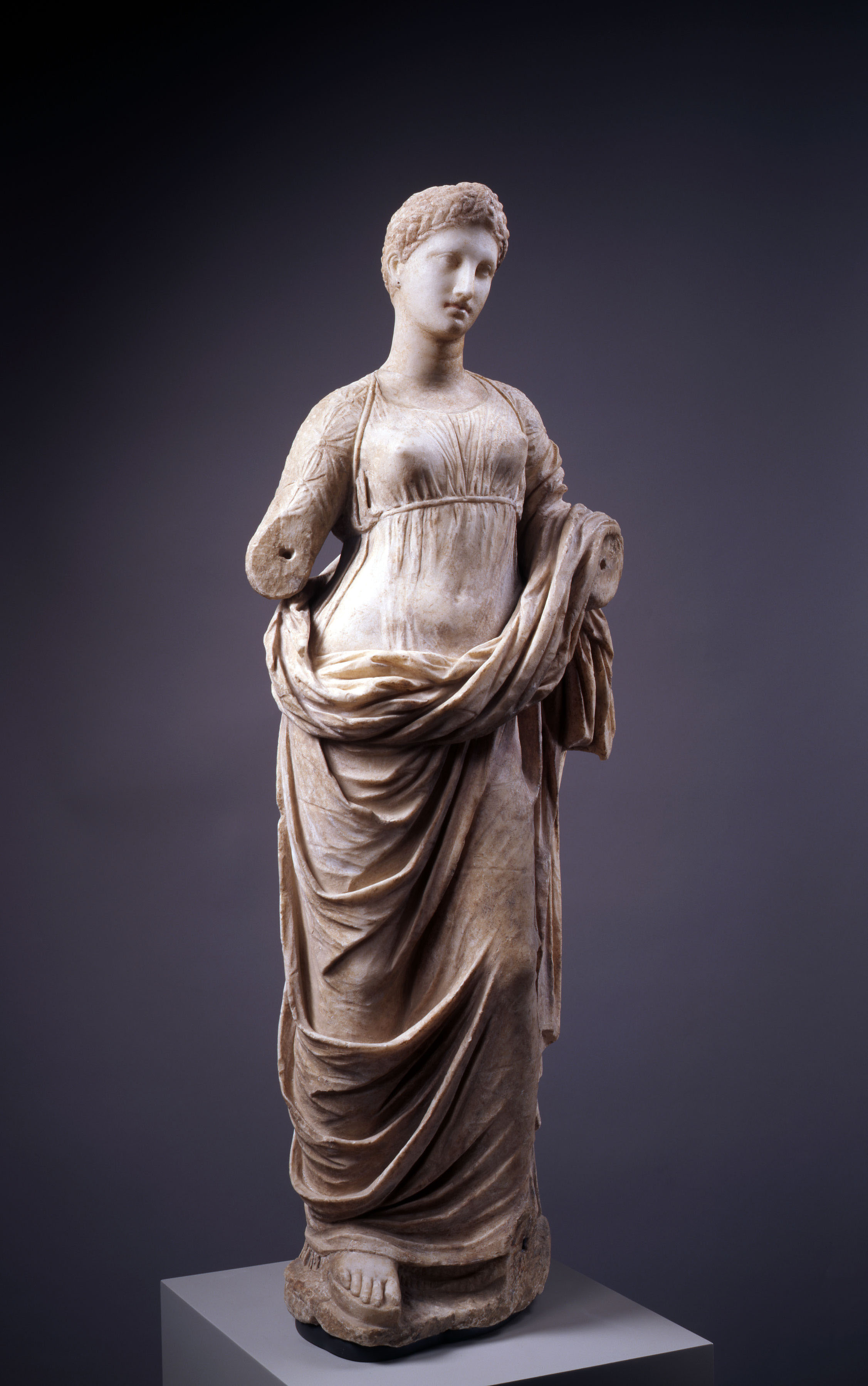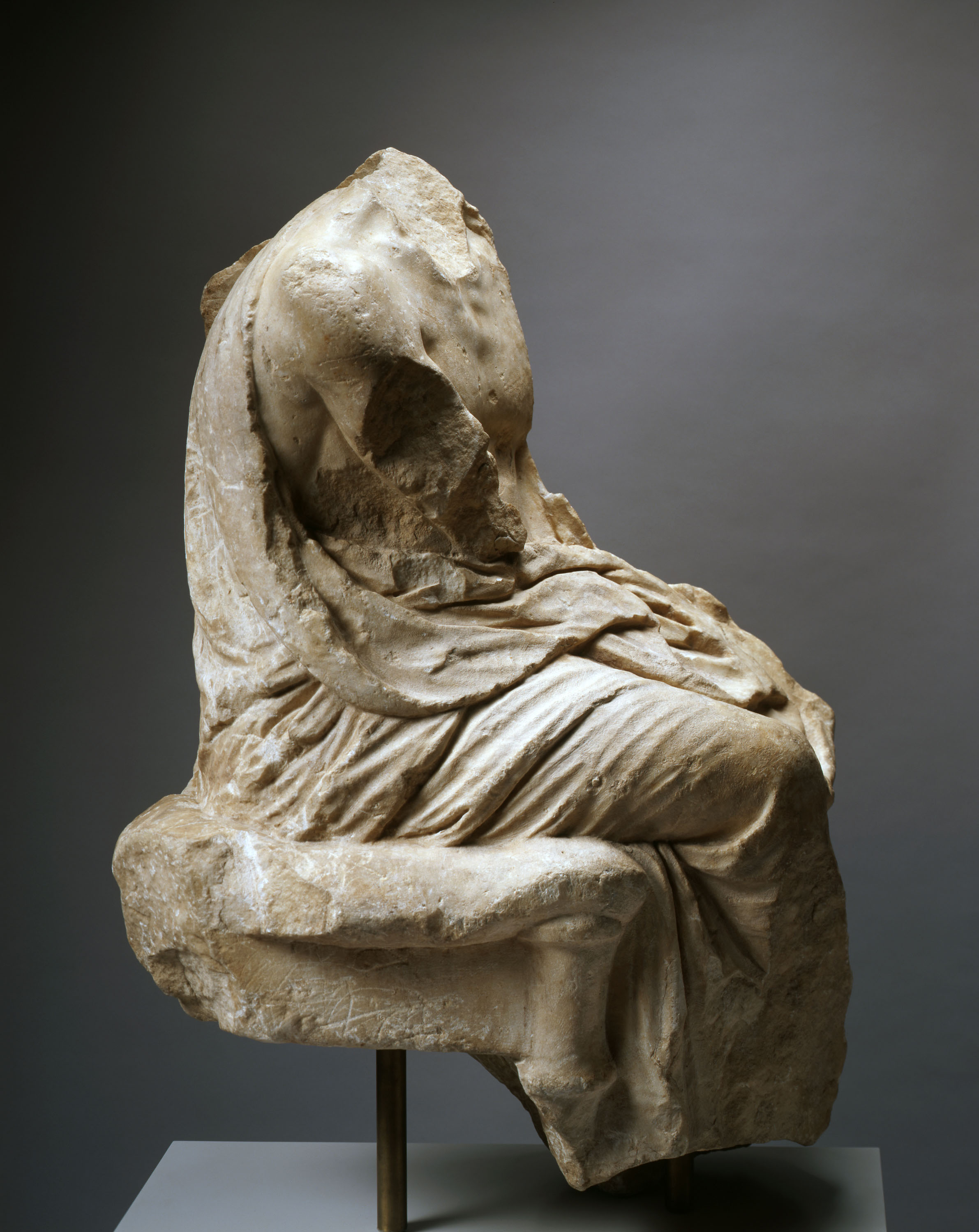Statue of a Goddess or Muse (Terpsichore)

On January 22, 2024, the Michael C. Carlos Museum returned a marble sculpture (2002.031.001A/B) to Greece after being presented with evidence that it came from illicit excavations.
Acquisition Background
Carlos purchased the sculpture in 2002 from New York-based dealer Robert Hecht (1919-2012), who stated he and partner George Zakos (1911-1983) had owned it since 1974.
Investigative Research
In April 2023, the Carlos met with representatives from the General Directorate of Antiquities and Cultural Heritage in Athens, Greece to discuss the sculpture. The museum was presented with photographic evidence from a 2011 Greek court case showing the sculpture in an uncleaned state. According to testimony and evidence, the statue was uncovered during illicit excavations in 1997 and remained in Greece until 1999.
Decision
The evidence demonstrated the sculpture very likely came from illicit excavations in the 1990s, contradicting the provenance provided at time of purchase. The statue was returned to Greece.
Featured Images
Statue of a Goddess or Muse (Terpsichore). Greek. Hellenistic, mid 2nd Century BCE. Marble. Carlos Collection of Ancient Art. Formerly 2002.31.1A/B © Bruce M. White, 2004.
Bathtub (Larnax)

On January 22, 2024, a Minoan larnax (2002.034.001) was returned to Greece after the Michael C. Carlos Museum was presented with evidence the object first appeared on the art market with convicted antiquities trafficker Gianfranco Becchina.
Acquisition Background
The Carlos purchased the larnax from Robert Haber, New York in 2002. At the time of purchase, the museum believed the larnax to have been in the collection of Nicholas Koutoulakis (1910-1996) since the late 1960s.
Investigative Research
In April 2023, the Carlos met with representatives from the General Directorate of Antiquities and Cultural Heritage in Athens, Greece to discuss the larnax. The museum was presented with evidence from the archive of convicted antiquities trafficker Gianfranco Becchina (the Becchina Archive). Photographs and a stock list show the larnax had been acquired by Becchina’s Palladion Antike Kunst, Basel from Papagelis in 1983. Given Becchina’s criminal history and the fact that the Carlos could not prove where the larnax was before it was with Palladion, there is a high probability the larnax is looted.
Decision
The larnax was returned to Greece.
Featured Images
Bathtub (Larnax). Crete. Minoan. Late Minoan IIIA, mid 14th Century BCE. Ceramic. Carlos Collection of Ancient Art. Formerly 2002.34.1.© Bruce M. White, 2004.
Seated Figure from a Grave Naiskos

On January 22, 2024, the Michael C. Carlos Museum returned a Greek marble seated figure (2003.005.001) to Greece after being presented with evidence it was trafficked by Gianfranco Becchina.
Acquisition Background
The Carlos purchased the figure in 2003 from Michael Ward, New York. No provenance information was given by the dealer.
Investigative Research
In November 2022, the Carlos was presented with evidence from the Consul of Greece in Atlanta that Gianfranco Becchina was convicted of trafficking the figure by a Greek court in 2017. In April 2023, the museum met with representatives from the General Directorate of Antiquities and Cultural Heritage in Athens, Greece to discuss the evidence. The Carlos was presented with several Polaroids from May 1989, one of which showed the sculpture either in the process of being removed from the ground or being stored outside.
Decision
The Greek court conviction and the photographic evidence strongly support the claim the figure was the product of illicit excavations. It was returned to Greece.
Featured Images
Seated Figure from a Grave Naiskos. Greek, perhaps Attic. Classical, ca. 350-325 BCE. Marble. Carlos Collection of Ancient Art. Formerly 2003.5.1. © Bruce M. White, 2004.




